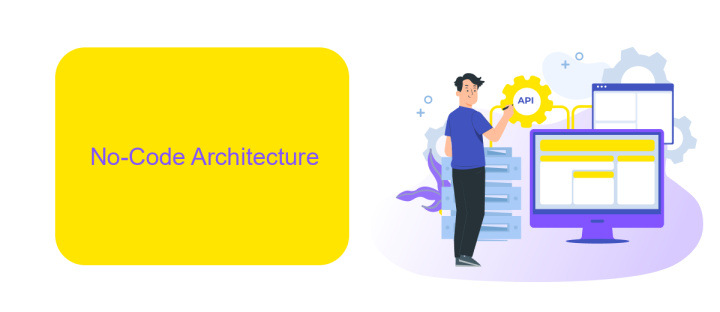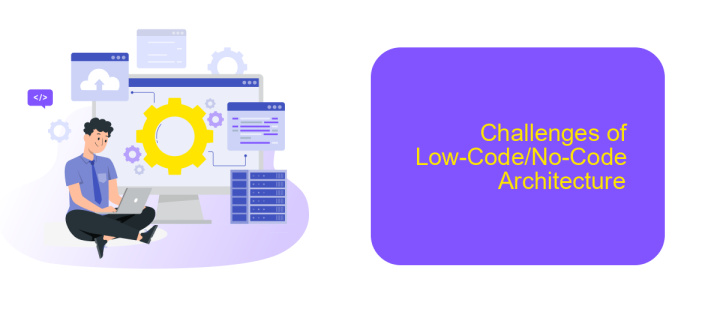Low-Code No-Code Architecture
In today's fast-paced digital landscape, Low-Code No-Code (LCNC) architecture is revolutionizing software development. By enabling users to create applications with minimal coding, LCNC platforms empower businesses to innovate rapidly and efficiently. This approach not only reduces development time and costs but also democratizes technology, allowing non-developers to contribute to the creation of sophisticated digital solutions.
Low-Code Architecture
Low-code architecture is a software development approach that reduces the amount of traditional hand-coding, enabling accelerated delivery of business applications. This method leverages visual development tools and pre-built functionality to streamline the development process, making it accessible to non-technical users as well as professional developers.
- Visual development interfaces
- Drag-and-drop components
- Pre-built templates and modules
- Automated testing and deployment
- Integration with existing systems
One of the key advantages of low-code platforms is their ability to integrate with various services and APIs, simplifying the process of connecting disparate systems. For instance, ApiX-Drive offers a robust solution for automating integrations between different applications, allowing users to set up workflows without extensive coding knowledge. This not only accelerates the development cycle but also enhances the flexibility and scalability of the applications created.
No-Code Architecture

No-Code Architecture empowers users to create, deploy, and manage applications without the need for traditional coding skills. This approach leverages visual development environments, drag-and-drop interfaces, and pre-built templates to streamline the app creation process. By eliminating the need for extensive programming knowledge, no-code platforms democratize software development, enabling business users and other non-technical stakeholders to actively participate in digital transformation initiatives.
One of the key benefits of No-Code Architecture is its ability to facilitate seamless integrations with various third-party services. For instance, platforms like ApiX-Drive offer robust tools for connecting different applications and automating workflows without writing a single line of code. This not only accelerates development timelines but also reduces the dependency on IT departments, allowing organizations to respond more swiftly to changing business needs. As a result, no-code solutions are becoming increasingly popular for rapid prototyping, process automation, and custom application development.
Benefits of Low-Code/No-Code Architecture

Low-Code/No-Code architecture offers significant advantages for businesses and developers alike. This approach accelerates application development, allowing even non-technical users to create functional applications with ease. By reducing the need for extensive coding, companies can cut down on development costs and allocate resources more efficiently.
- Faster Development Cycles: With intuitive drag-and-drop interfaces, development time is significantly reduced.
- Cost Efficiency: Minimizes the need for specialized developers, thereby reducing labor costs.
- Accessibility: Empowers non-technical staff to contribute to application development.
- Scalability: Easily scalable solutions that can grow with your business needs.
- Integration: Seamless integration with existing systems and third-party services like ApiX-Drive simplifies data synchronization and workflow automation.
By adopting Low-Code/No-Code solutions, organizations can rapidly respond to market changes and customer demands. The flexibility and ease of use enable businesses to innovate continuously while maintaining operational efficiency. This architecture is particularly beneficial for small to medium-sized enterprises looking to stay competitive without incurring high development costs.
Challenges of Low-Code/No-Code Architecture

Low-Code/No-Code (LCNC) architecture offers numerous benefits, but it also presents several challenges. One of the primary issues is the limitation in customization. While LCNC platforms provide pre-built components, they may not always meet specific business needs, leading to potential constraints in functionality and flexibility.
Another significant challenge is the integration with existing systems. Many organizations have legacy systems that may not seamlessly integrate with LCNC platforms, requiring additional effort and resources. This can be particularly problematic for businesses with complex IT infrastructures.
- Scalability: LCNC solutions may struggle to scale effectively with growing business demands.
- Security: Ensuring robust security measures can be difficult, especially with sensitive data.
- Vendor Lock-In: Dependency on a single vendor can limit future technological choices.
- Performance: LCNC platforms might not always deliver optimal performance for high-demand applications.
To address integration challenges, services like ApiX-Drive can be invaluable. ApiX-Drive facilitates seamless integration between different systems, reducing the complexity and time required to connect LCNC platforms with existing applications. By leveraging such tools, organizations can mitigate some of the integration hurdles and enhance the overall efficiency of their LCNC implementations.
Use Cases for Low-Code/No-Code Architecture
Low-code and no-code architectures are increasingly being used to accelerate digital transformation across various industries. One common use case is rapid application development, where businesses can quickly create and deploy applications without extensive coding skills. This is particularly beneficial for startups and small businesses that need to bring products to market swiftly. Additionally, these platforms are used for automating routine tasks and workflows, enabling organizations to improve efficiency and reduce human error.
Another significant use case is integrating disparate systems and services. Tools like ApiX-Drive facilitate seamless integration between various applications, allowing businesses to synchronize data and automate processes without writing complex code. This is especially useful for companies that need to connect multiple SaaS applications or legacy systems. Furthermore, low-code/no-code platforms are employed for creating custom dashboards and reporting tools, providing real-time insights and analytics to help businesses make informed decisions.
FAQ
What is Low-Code No-Code Architecture?
What are the benefits of using Low-Code No-Code platforms?
Can Low-Code No-Code platforms handle complex integrations?
Who can benefit from using Low-Code No-Code platforms?
Are Low-Code No-Code platforms secure?
Time is the most valuable resource in today's business realities. By eliminating the routine from work processes, you will get more opportunities to implement the most daring plans and ideas. Choose – you can continue to waste time, money and nerves on inefficient solutions, or you can use ApiX-Drive, automating work processes and achieving results with minimal investment of money, effort and human resources.

